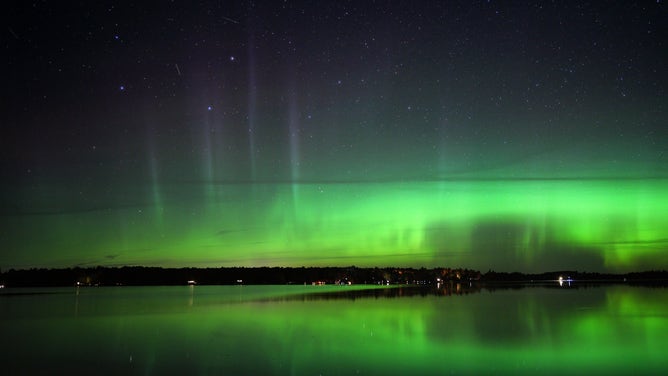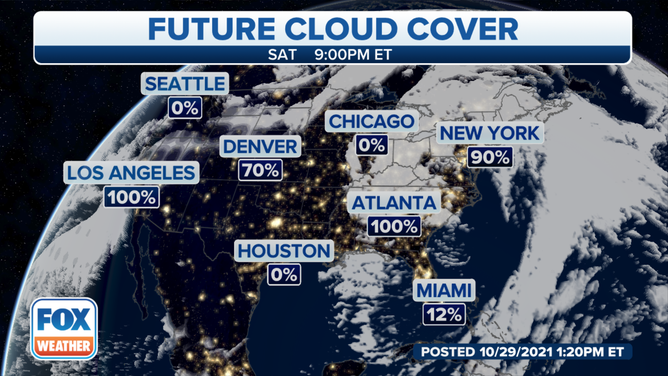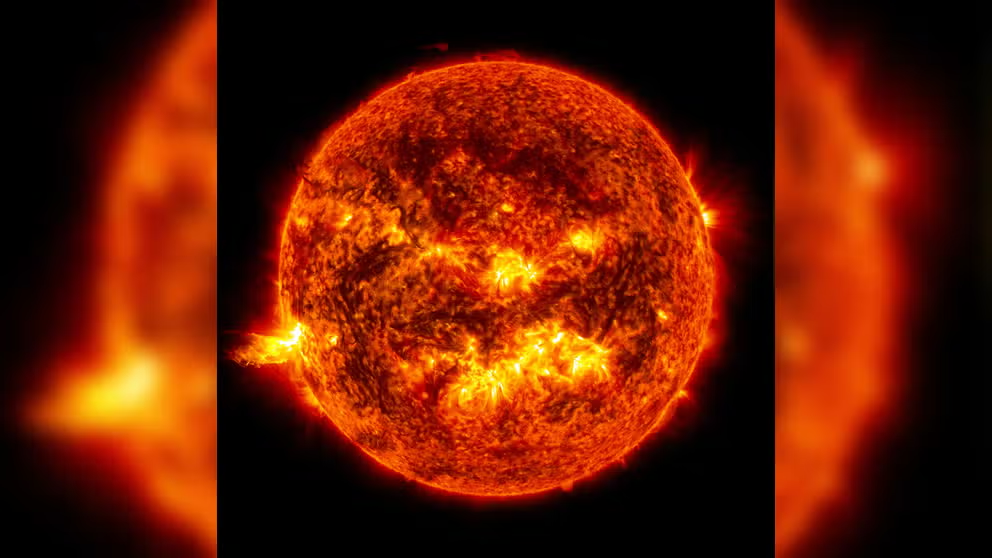Strong solar flare may trigger Northern Lights sightings Saturday night
A strong solar flare that erupted from the sun Thursday brings the potential for Northern Lights sightings across the northern U.S. on Saturday night.

Northern lights are seen in the night sky near Canyon, Minnesota on Friday, August 30, 2019.
(Brian Peterson/Star Tribune / Getty Images)
WASHINGTON, D.C -- A strong solar flare that erupted from the sun Thursday brings the potential for Northern Lights sightings across the northern U.S. on Saturday night.
The flare measured as an X class -- the strongest rating NASA gives to solar flares, though the rating was an X1, which is the lowest rung on the X-class scale.
NASA's Space Weather Prediction Center has issued a Geomagnetic Storm Watch for Saturday with a rating of G3 on its 1-5 scale, which suggests a "strong" storm is possible.
LEARN: These are the 5 Categories that Measure Geomagnetic Storms | Here is how NASA rates the strength of solar flares
How scientists measure solar flares
NASA gives this short narrated video about solar flares, how they are classified, and their effect on Earth. (Video courtesy: NASA)
Geomagnetic weather can disrupt GPS satellites and radio depending on the severity of the solar storm. Still, the most notable effect is the Northern Lights, which usually follow a few days after solar flares erupt. The flares bring a barrage of electrons that interact with oxygen and nitrogen in Earth's magnetic field that surrounds the outside of our planet.
"The production of the colors is very similar to what you see in a neon sign," says Don Hampton, a researcher at the University of Alaska, Fairbanks. "It's basically just an electrical current."
As the electrons hit the oxygen and nitrogen molecules, it "dumps in a little energy," Hampton says. "And then (the molecules) relax back down to ground state. When they do that, they release a little bit of light."
LEARN: 7 Things To Know About The Northern Lights
Space weather models predict the storm will peak Saturday evening and night with the potential for the lights to be high above the horizon as far south as Seattle, Chicago and Boston, and visible on the horizon as far south as Oregon, St. Louis and New York.
How's the weather looking?
Skies look clear in the Pacific Northwest Saturday night, as does the western Great Lakes area, including Chicago. New England looks to be socked in with clouds, and Denver and the Northern Plains are iffy.

(FOX Weather)
Want to see the Northern Lights? Get away from city lights
Light pollution from nearby urban areas will make it difficult to spot the aurora.
"When (the aurora) are fairly dim, it's harder for your eyes to see the colors and distinguish between city lights," Hampton said. "You want to be out of town a couple of miles. If you can be in a farm field or something, look off to the north with fewer lights."
MORE: Tips for Spotting the Northern Lights
You'll also want to make sure the sun is well below the horizon -- think 11 p.m. to 3 a.m. -- so the skies are as dark as they can be, and hope a bright moon isn't around to blast the sky with competing for light.
Beware: The Northern Lights will look better on camera
If the aurora display is relatively dim, it may only appear to your eyes as a faint green or milky haze, depending on the strength of the show. If the storm really gets going, more dazzling greens and purples may be seen with just your eyes, provided they've adjusted to the darkness.
You can bring a camera, set it on long exposure and keep it steady, and the lights will pop out. Just remember, cameras are much better than human eyes at picking up the color at night, so photos you see of the aurora on social media may not match what you might see in the same spot.
